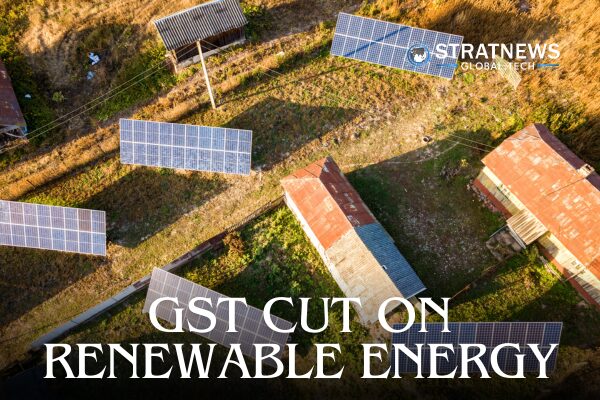GST Reduced to 5% on Renewable Energy Devices to Boost Clean Energy Push
India has taken a major step towards cleaner energy by reducing GST on renewable energy devices from 12% to 5%. This change, approved during the GST Council’s 56th meeting, aims to cut costs across the renewable energy sector and support India’s transition to greener power.
The reduced GST will apply across the renewable energy value chain. It will make clean electricity more affordable while directly benefiting households, farmers, developers, and manufacturers.
Lower Project Costs and Cheaper Tariffs
Reducing GST from 12% to 5% will lower the overall cost of renewable energy projects. A utility-scale solar project costing around ₹3.5–4 crore per MW will now save about ₹20–25 lakh per MW. At the scale of a 500 MW solar park, this adds up to savings of over ₹100 crore.
With these savings, power distribution companies (DISCOMs) will also face less financial pressure. This could result in national savings of ₹2,000–3,000 crore per year in power procurement. Lower tariffs will benefit end consumers by improving access to cheaper clean electricity.
Direct Benefits for Households and Farmers
Households installing rooftop solar panels under the PM Surya Ghar: Muft Bijli Yojana will now pay ₹9,000–10,500 less for a typical 3 kW system. This will encourage more families to shift to solar energy.
Farmers will also gain through the PM-KUSUM scheme. The cost of a 5 HP solar pump will drop by about ₹17,500, saving a total of ₹1,750 crore across 10 lakh pumps. These savings will make irrigation more affordable, especially in rural areas.
Rural schools, health centres, and small businesses will also benefit from cheaper mini-grids and solar water pumps. With shorter payback times and better returns, clean energy will become more accessible in underserved areas.
Boost for Domestic Manufacturing and Jobs
The GST cut is set to reduce the cost of solar modules and components by 3–4%. This will help Indian manufacturers become more competitive, supporting the Make in India and Aatmanirbhar Bharat initiatives.
India’s target of 100 GW of solar manufacturing by 2030 could now attract more investment. Since each GW of manufacturing can create about 5,000 jobs, this reform may support 5–7 lakh green jobs over the next ten years.
Paving the Way for a Greener Future
This GST reform is expected to accelerate the rollout of renewable energy projects. Lower costs can speed up the signing of power agreements and the completion of solar parks. India aims to add 300 GW of renewable capacity by 2030. A 2–3% cost cut could unlock ₹1–1.5 lakh crore in investments.
Each gigawatt of solar power saves around 1.3 million tonnes of CO₂ emissions per year. With faster project deployment, India could avoid 50–70 million tonnes of CO₂ annually by 2030.
This move aligns with India’s goals under the Paris Agreement and supports the national target of 500 GW of non-fossil fuel power by 2030. The revised GST rate will be effective from 22nd September 2025. It marks a key milestone in India’s journey toward clean energy and economic self-reliance.
with inputs from Reuters


